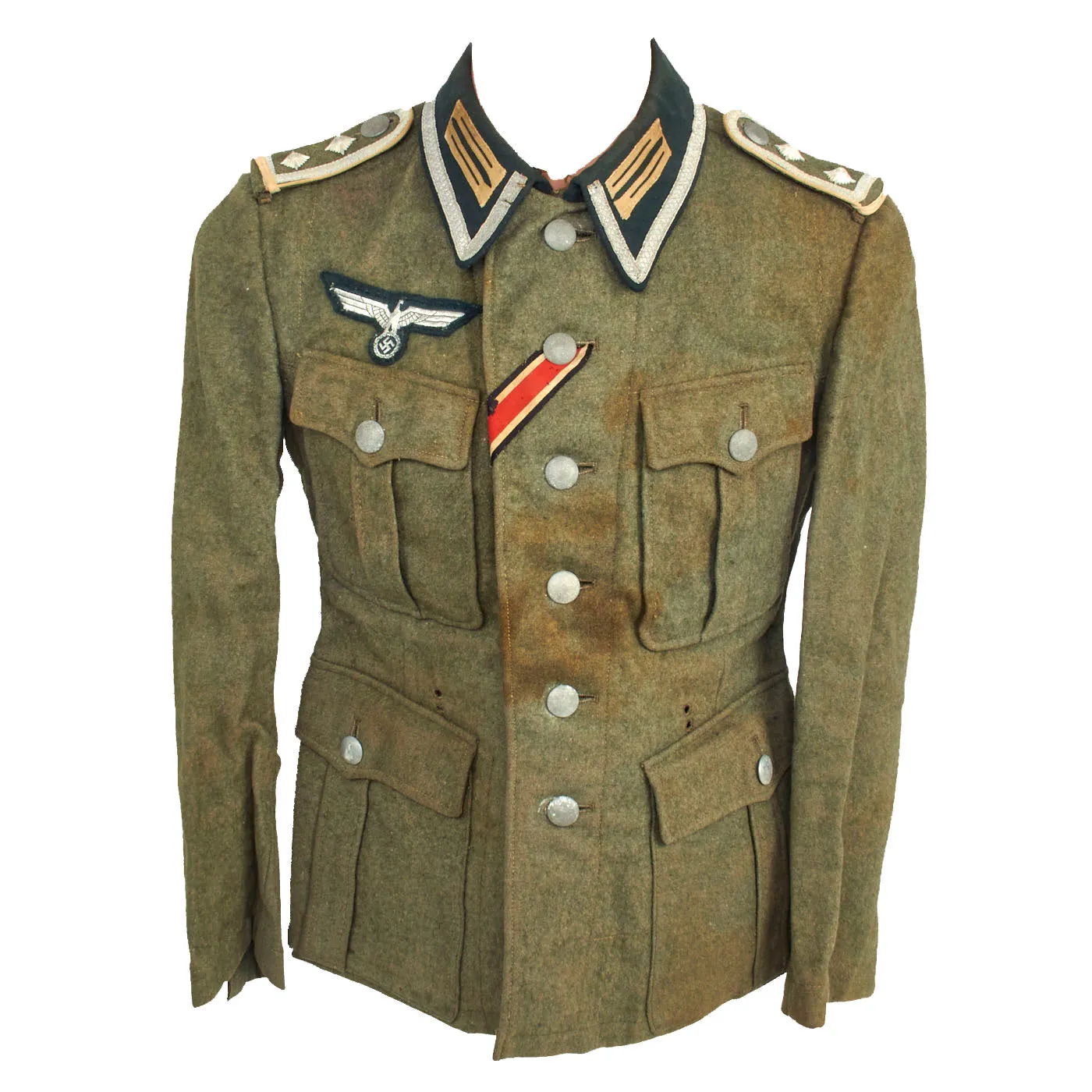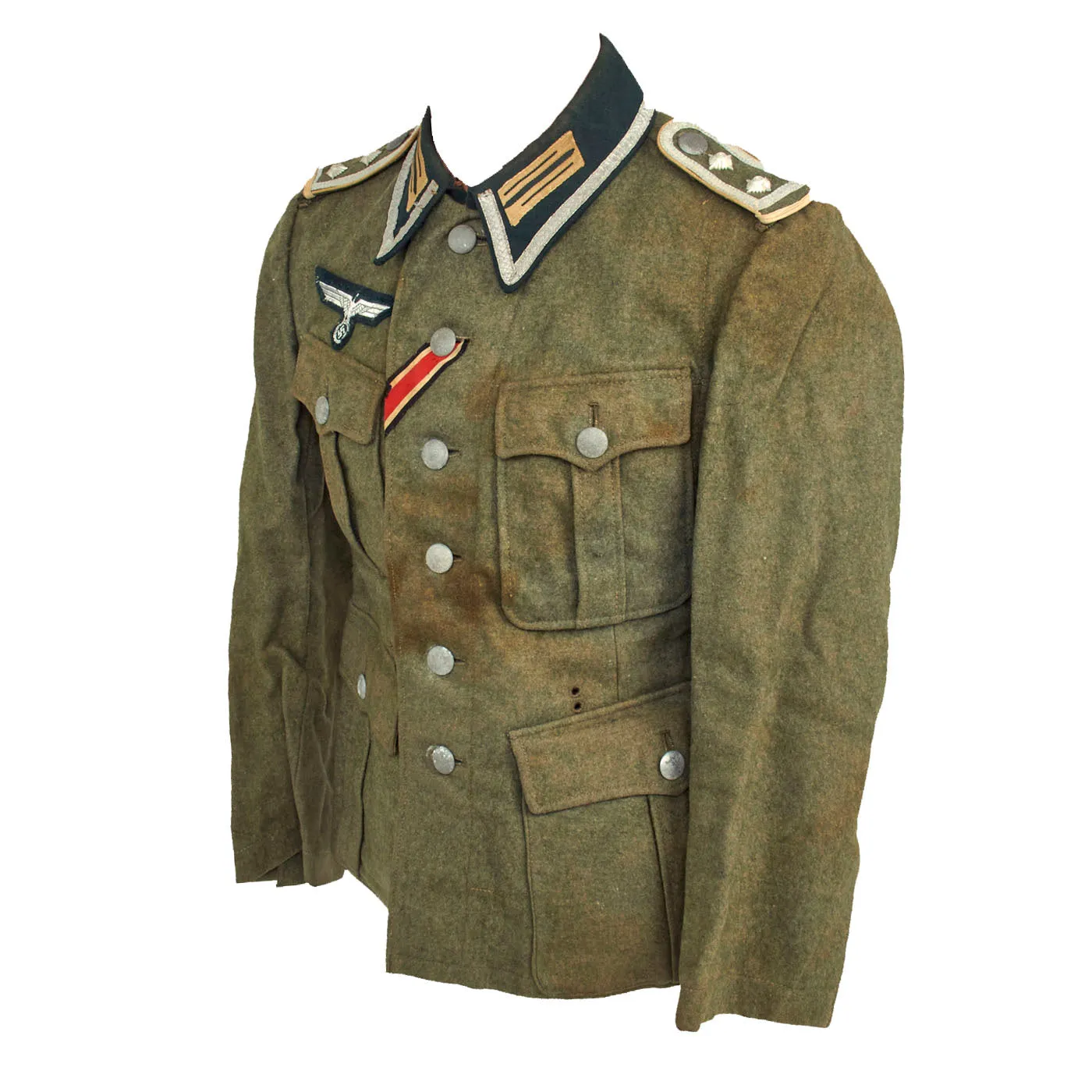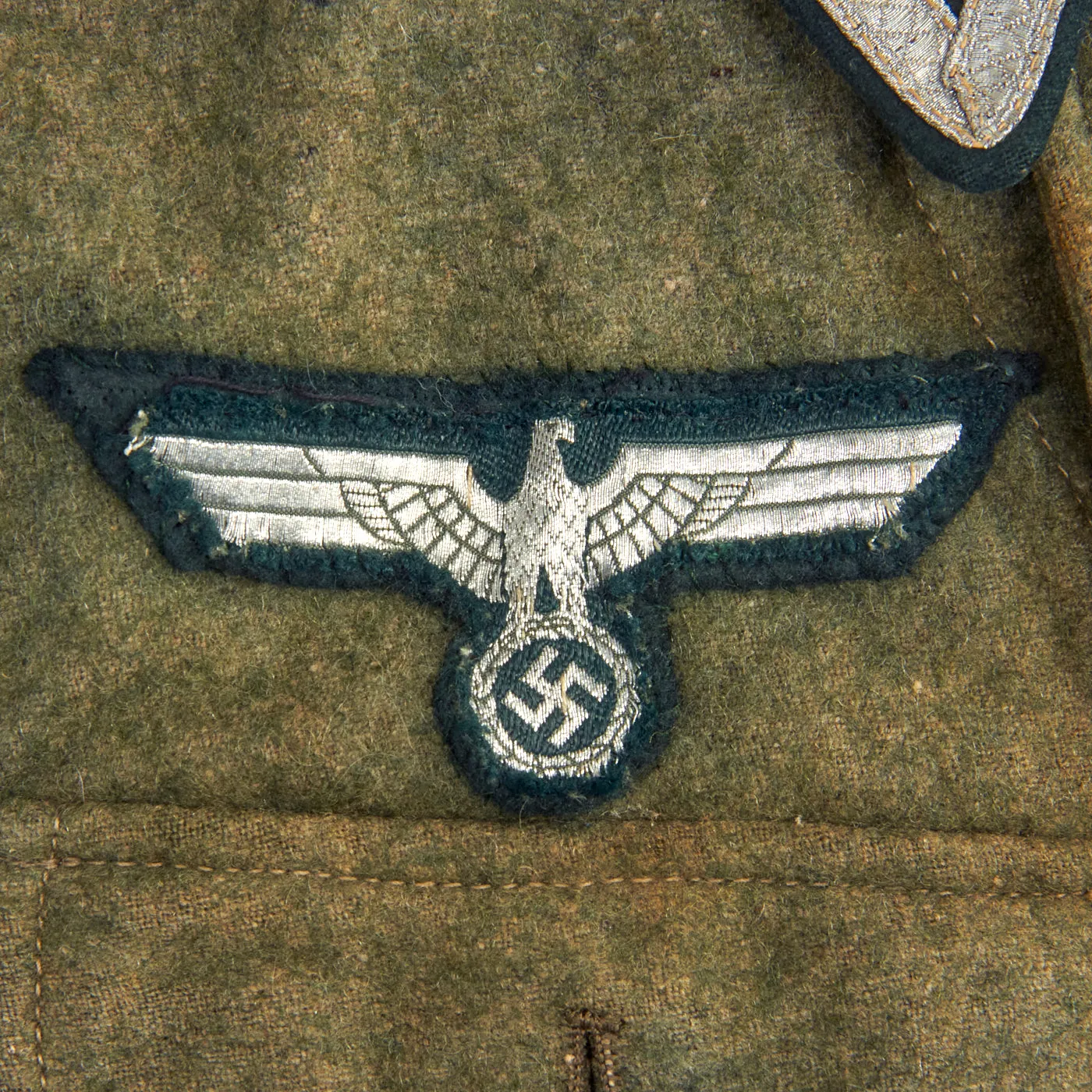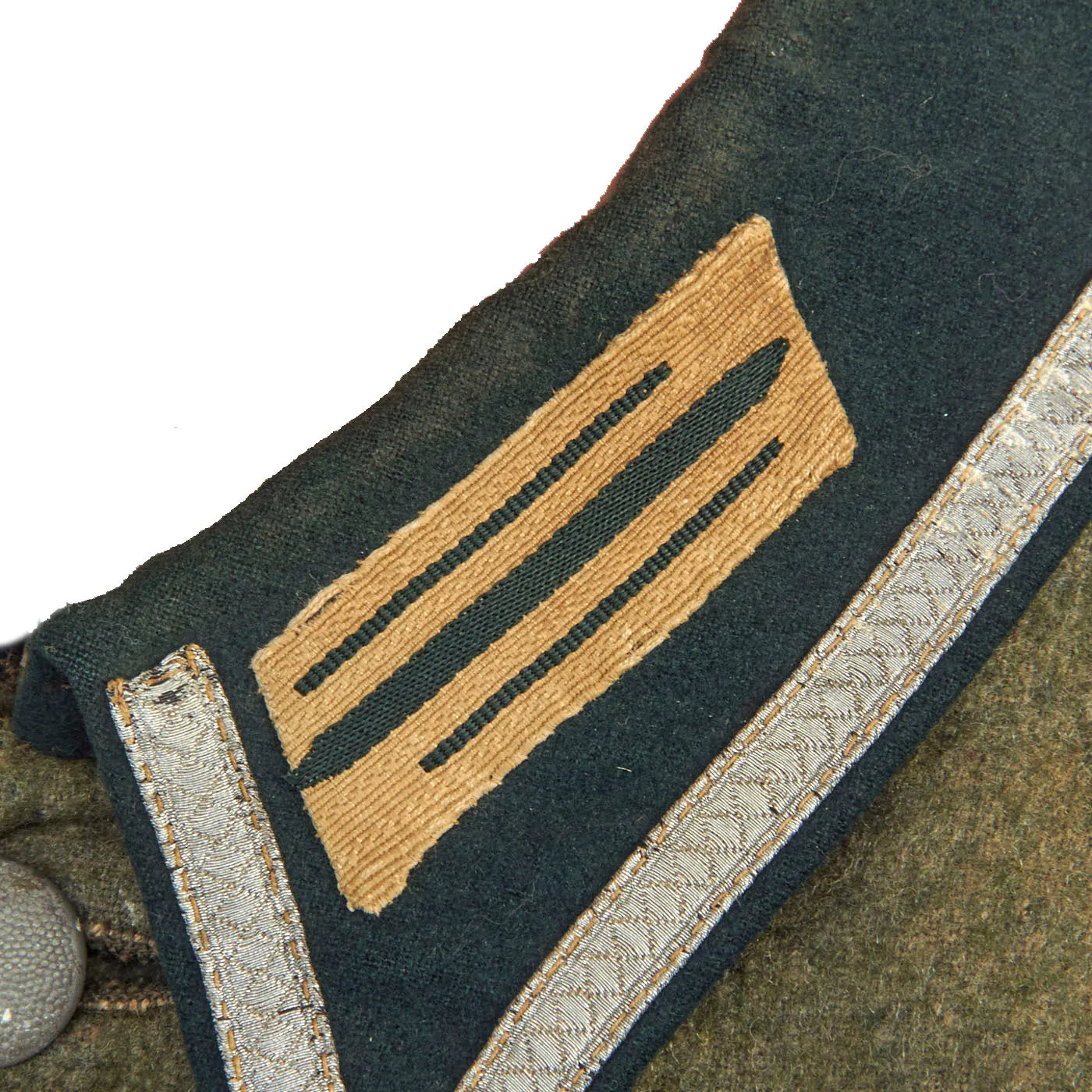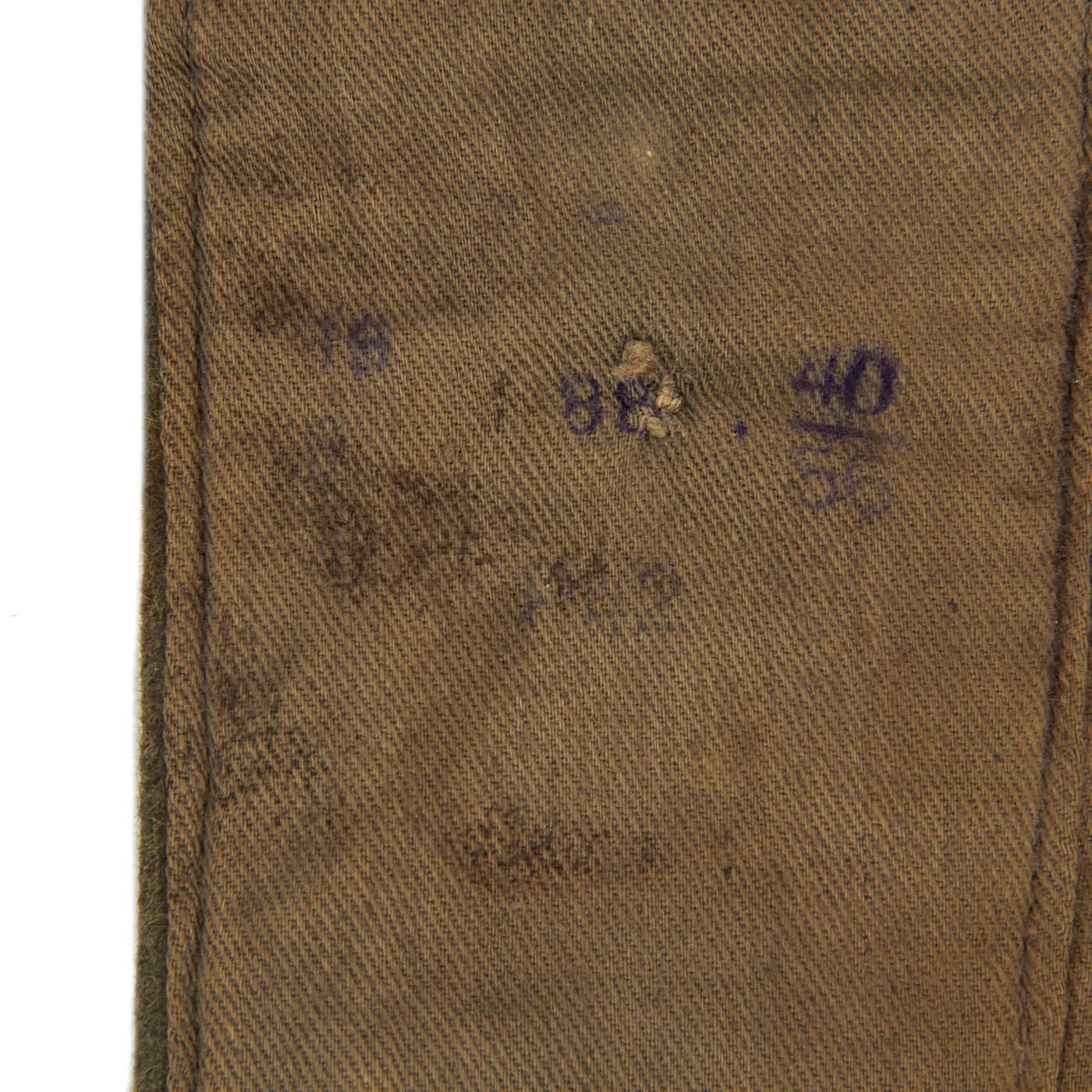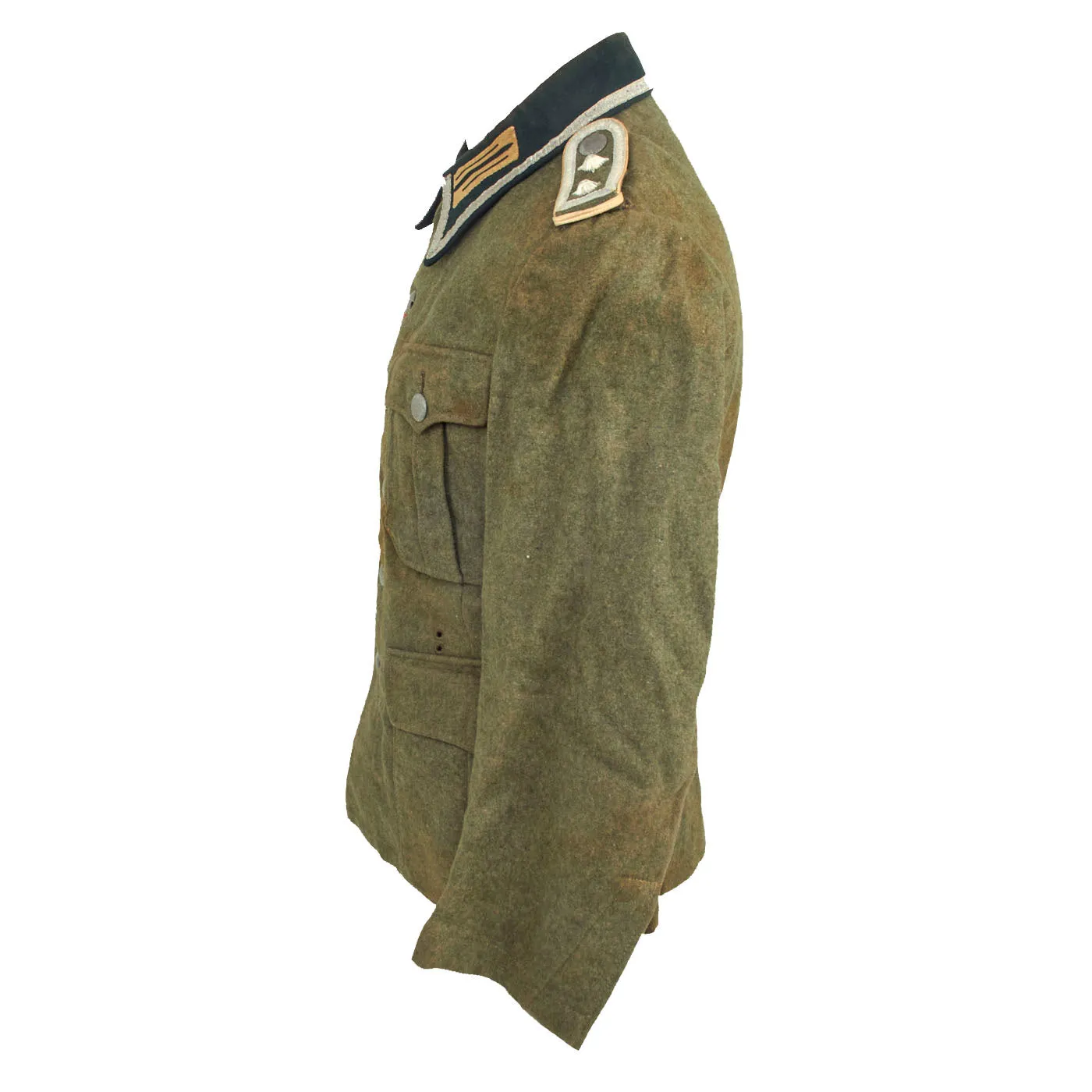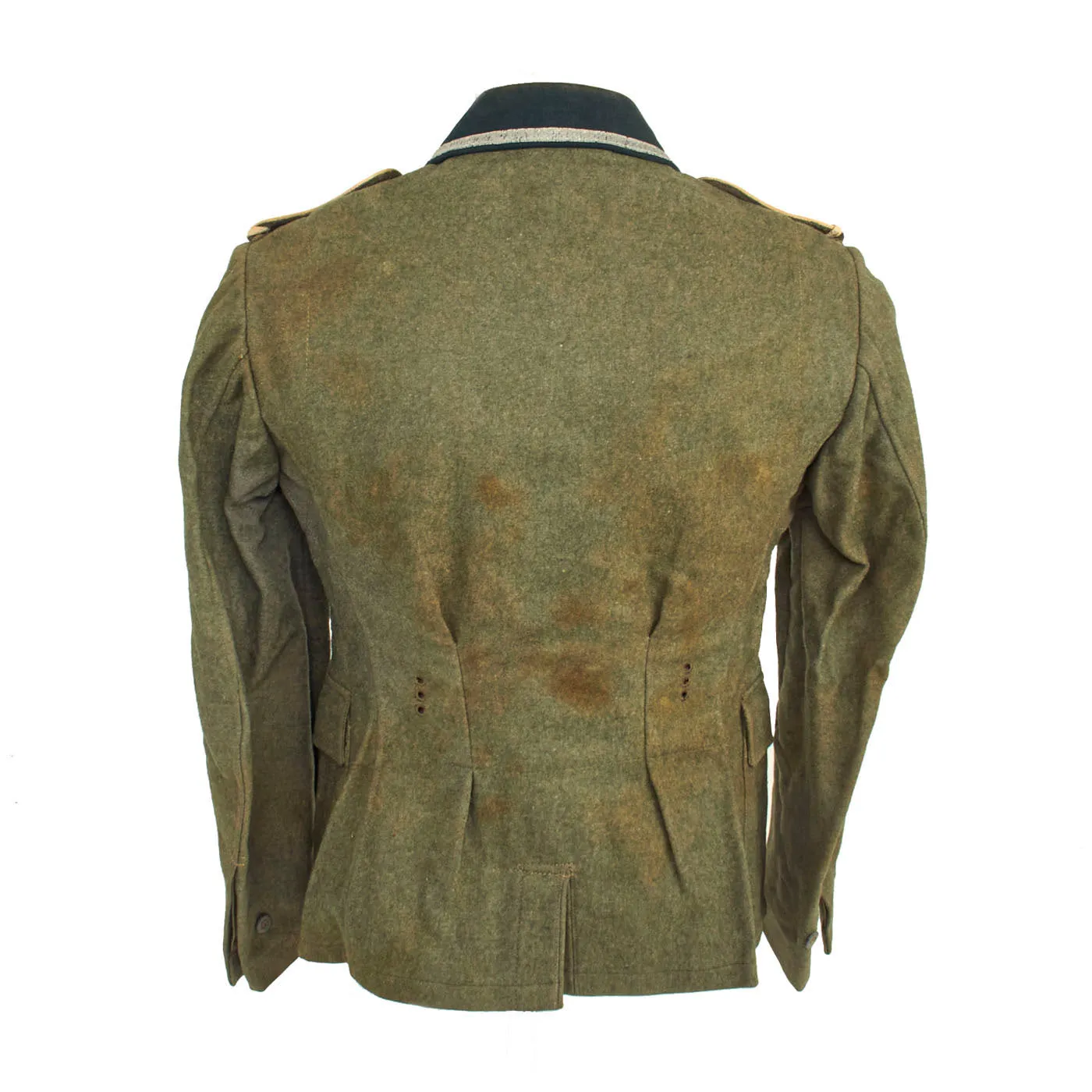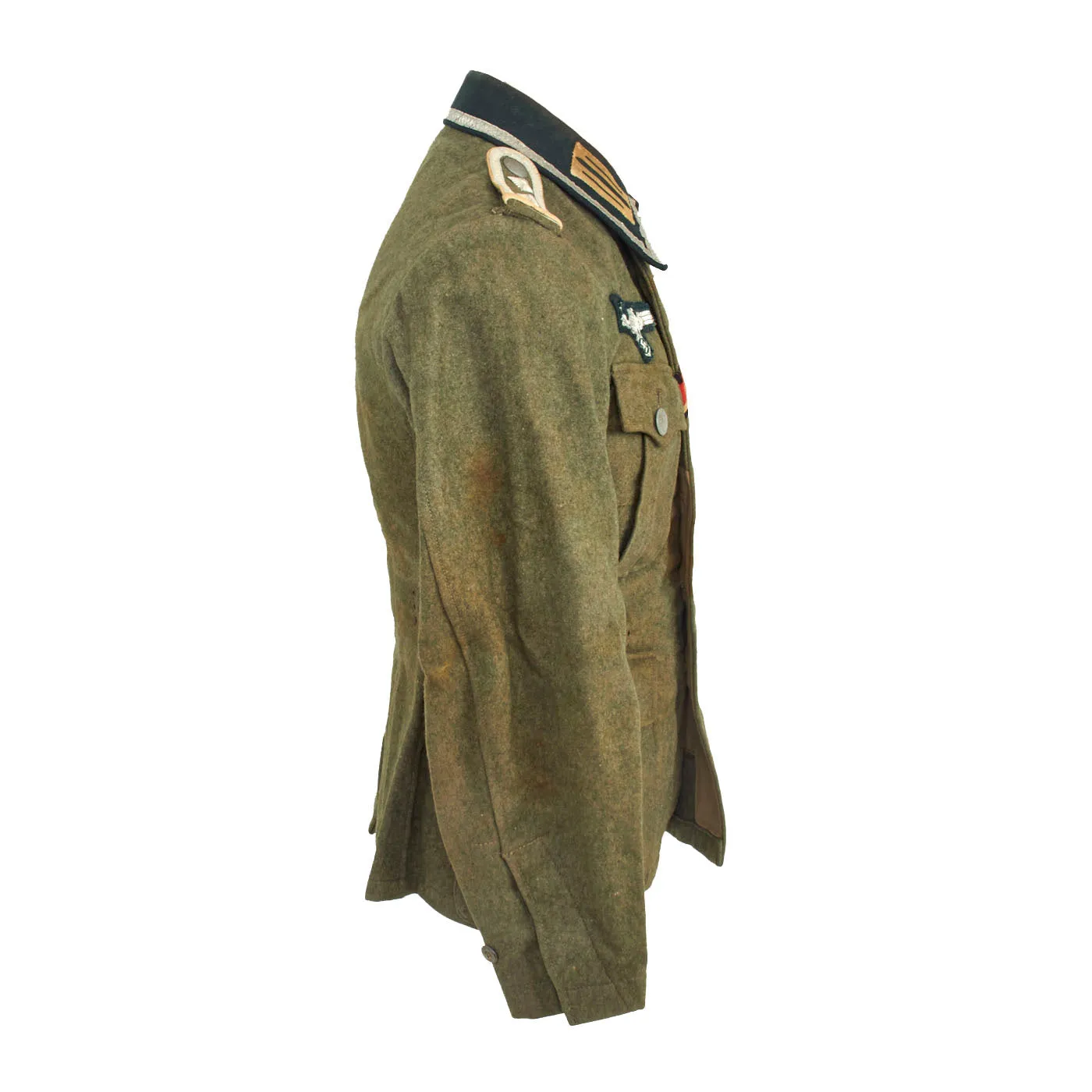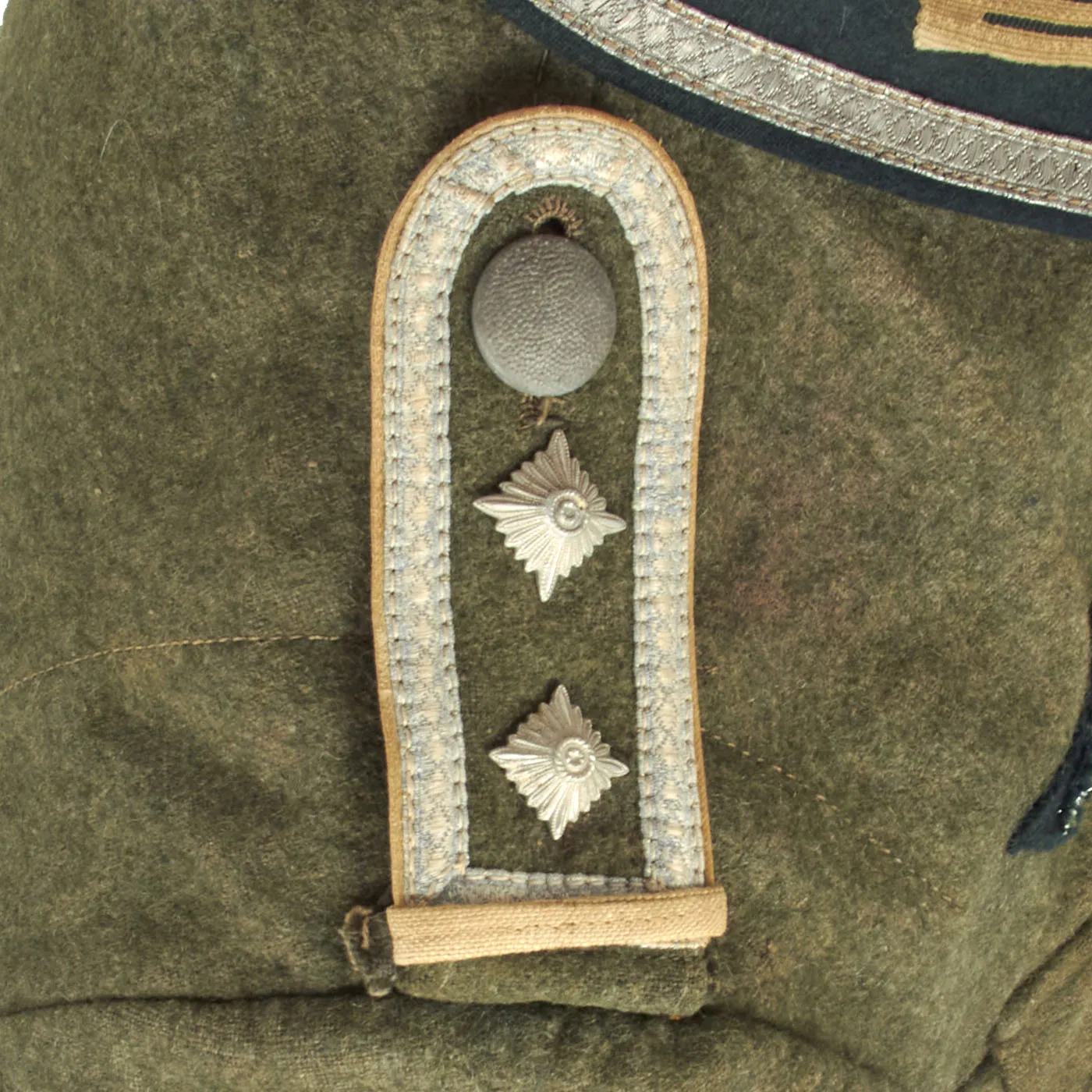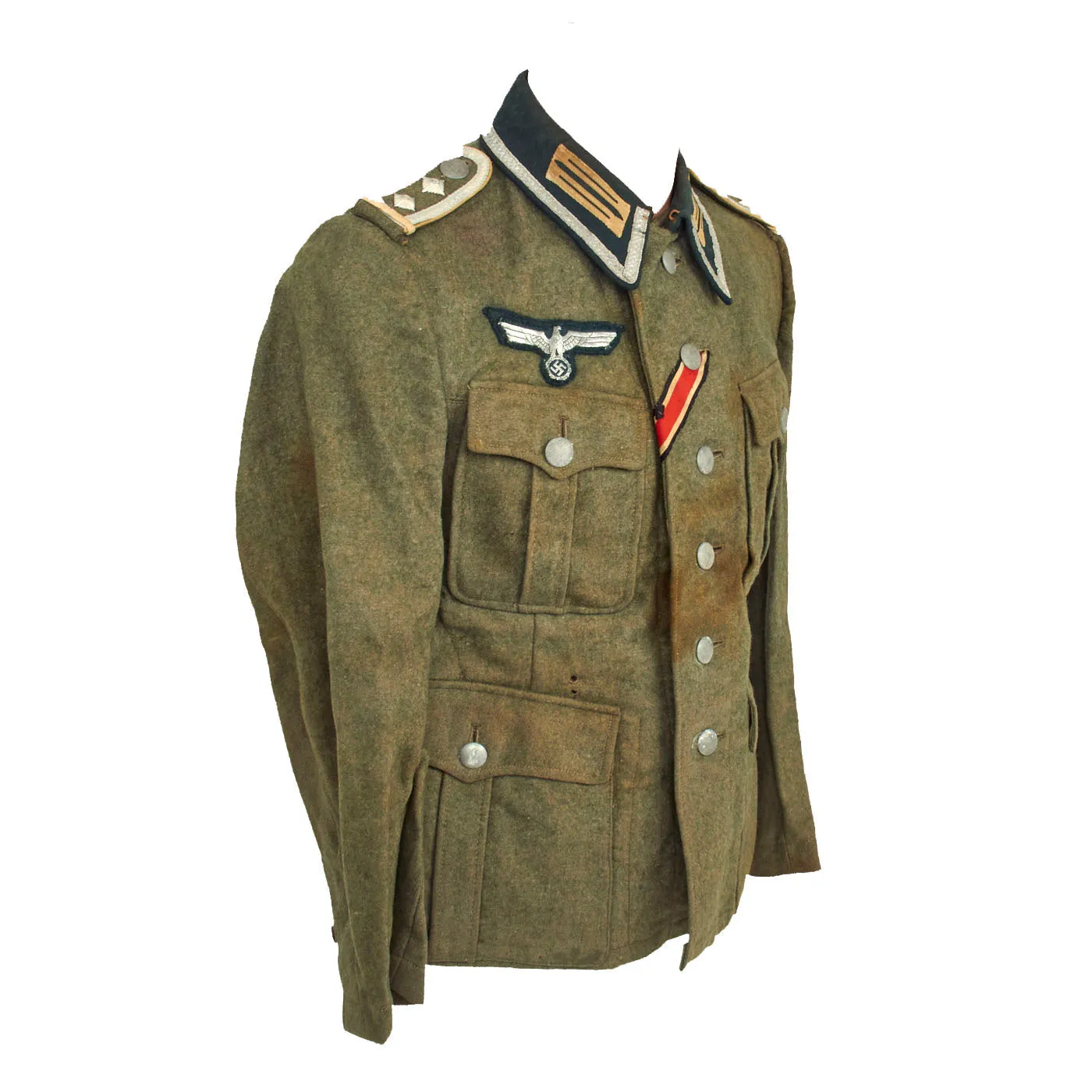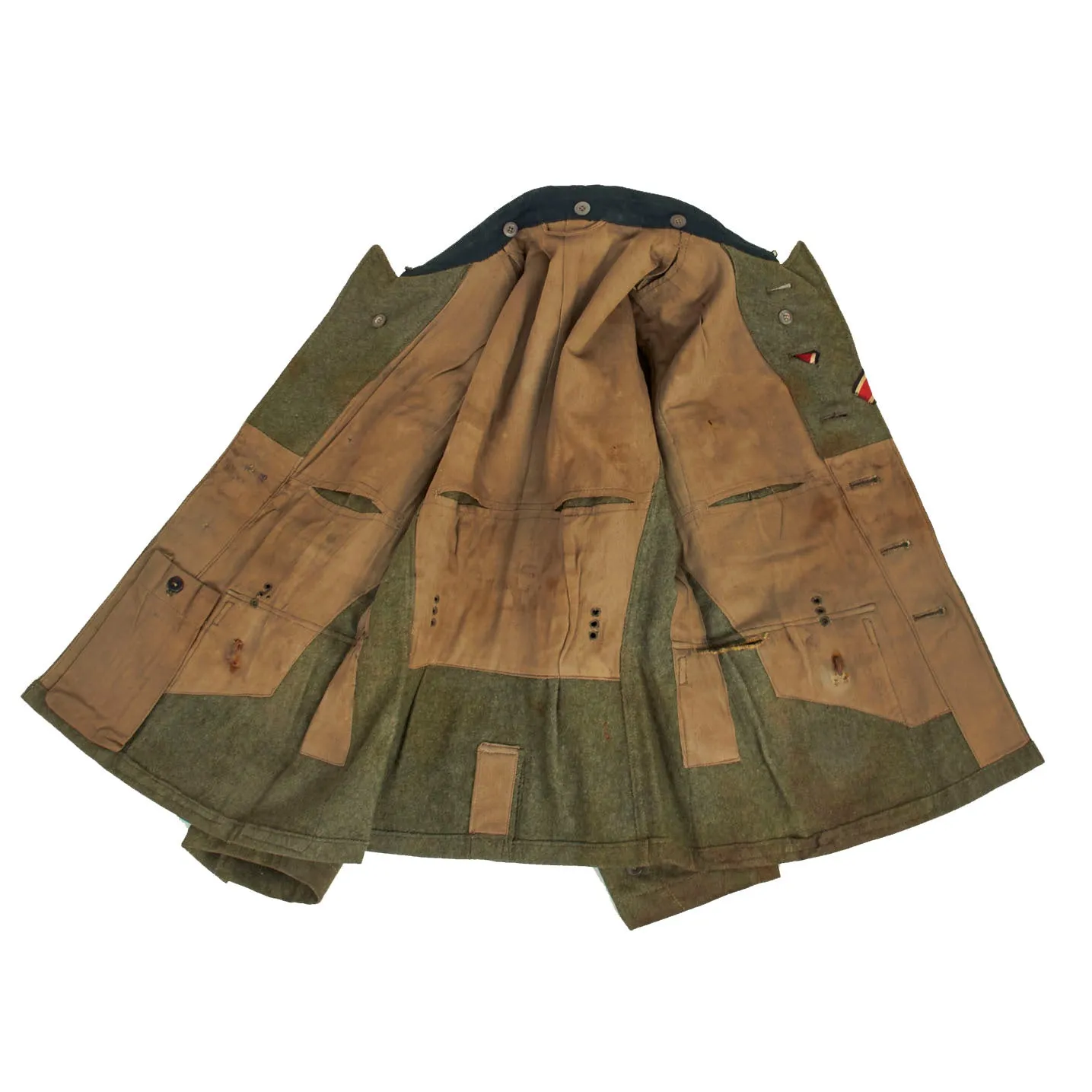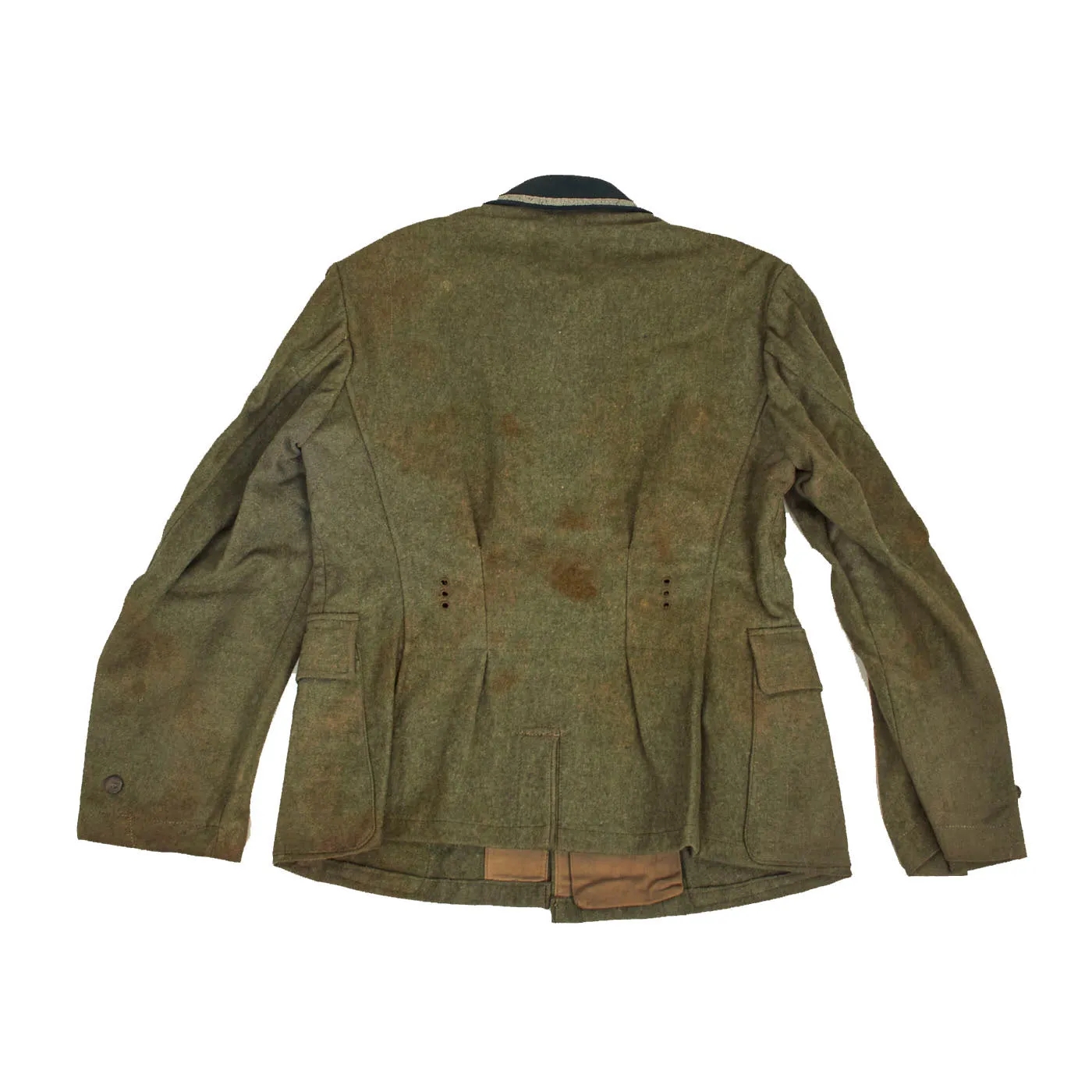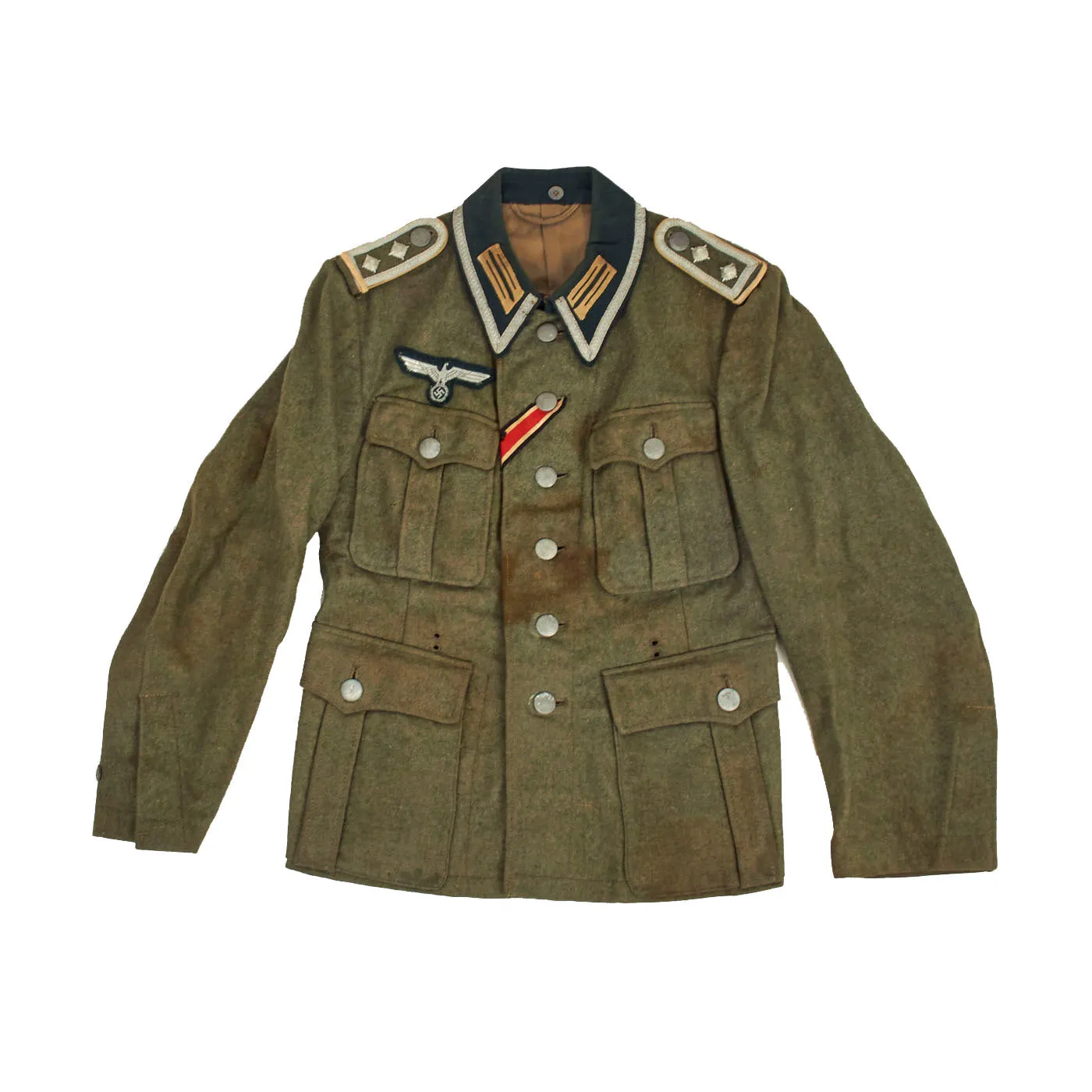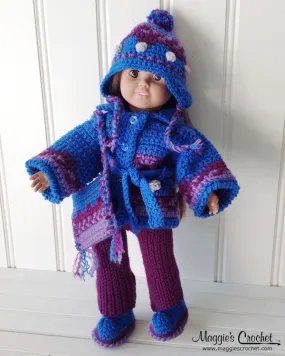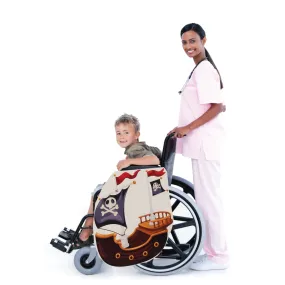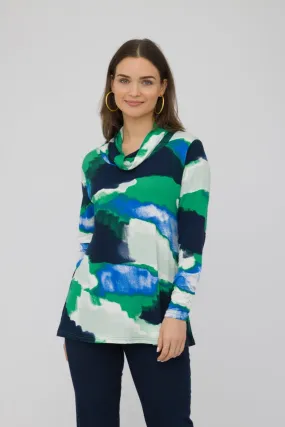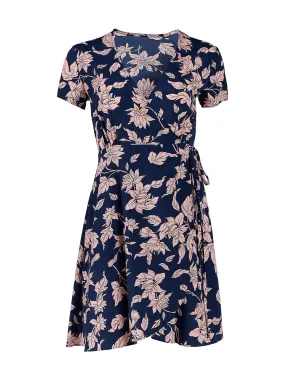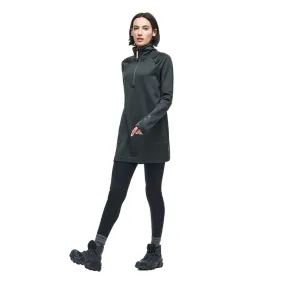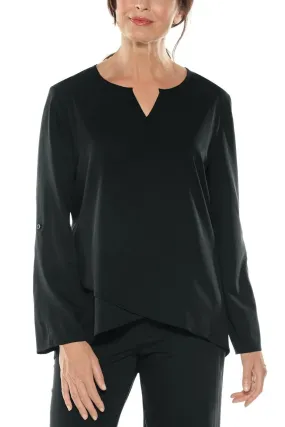Original Item: Only One Available. This is a very nice wartime pattern German WWII Heer Army NCO M-36 Field Tunic, showing some service wear and in nice untouched condition. There is no maker tag, but there are faded issue stamps on the inside of the right breast, where sizing and maker information is usually stamped on enlisted and NCO tunics. Unfortunately due to wear and staining, we cannot make out the markings.
The tunic features four pockets with scalloped flaps and pebbled aluminum buttons, and is closed with six pebbled aluminum buttons on the right breast flap meeting an equal number of reinforced buttonholes on the left flap. All buttons are maker marked on the reverse, though this can be hard to see due to oxidation.
It is adorned with the usual rank and branch insignia used on German tunics. The attractive Army breast eagle is the correct NCO BeVO Bullion embroidered type, and is very neatly hand stitched to the chest in a fashion typical of wartime German tailor work. There is also a black / white / red ribbon sewn into the buttonhole second from the top, indicating that the wearer had been awarded the Second Class Iron Cross 1939 award. We can see that there was also an award attached to the left breast pocket at some point.
The collar is wrapped in a dark-green wool, and is decorated a strip of 9mm flat silver-grey woven rayon braid (Unteroffoziers-Tressen), sewn around the collar border. There are EM/NCO litzen collar patches on each side, which are woven from white thread with a dark green background matching the collar. They do not have Corps Color stripes, as in 1938 they were removed from EM/NCO collar insignia to save time. The collar and its insignia show wear consistent with long service in the field, showing some staining and loss of the "nap" of the fabric.
The button attached style NCO shoulder straps (Unteroffiziere Schulterklappen) attached to the tunic have a field gray wool base, with silver diamond-woven tress border all the way around. TWO rank pips are present on the shoulder boards, indicating the rank of Oberfeldwebel, an NCO rank equivalent to a U.S. Army Master Sergeant. The piping around the shoulder straps is Weiß (white), the Corps Color (Waffenfarbe) for infantry and motorized infantry. There is also a white loop sewn onto the ends of the shoulder straps, which we do not know the significance of.
Overall, the tunic shows staining from use in the field, and really has a great "been there" look to it. There are stains on the front and back, oxidation to the metal components, and wear to the fabric. A nice "salty" service used example, ready to display!
Approx. Measurements:
Collar to shoulder: 10”
Shoulder to sleeve: 23”
Shoulder to shoulder: 16”
Chest width: 17.5”
Waist width: 16”
Hip width: 17”
Front length: 27"
Terms such as M40 and M43 were never designated by the Wehrmacht, but are names given to the different versions of the Model 1936 field tunic by modern collectors, to discern between variations, as the M36 was steadily simplified and tweaked due to production time problems and combat experience.
Field Tunic (Feldbluse) Model 1936
When the NSDAP came to power in early 1933 the Reichswehr, the armed forces of the Weimar Republic, were near the end of a two-year project to redesign the Army Feldbluse (field-blouse). Beginning in that year the new tunic was issued to the Reichsheer and then the rapidly growing Wehrmacht Heer, although minor design changes continued to be made until the appearance of the standardized Heeres Dienstanzug Modell 1936. The M36 tunic still retained the traditional Imperial and Reichswehr uniform color of grey-green "field gray" (feldgrau) wool, but incorporated four front patch pockets with scalloped flaps and pleats (on Reichswehr tunics the lower pockets were internal and angled). The front was closed with five buttons rather than the previous eight, and the collar and shoulder straps were of a dark bottle-green instead of the Reichswehr grey. Compared to the Weimar-era uniforms the skirt of the feldbluse was shorter and the tailoring was more form-fitting due to Germany's adoption of mechanized warfare: soldiers now spent much time in the confined space of a vehicle and a shorter jacket was less likely to pick up dirt from the seats. It also included an internal suspension system, whereby a soldier could hang an equipment belt on a series of hooks outside of the tunic. These hooks were connected to two straps inside the lining, which spread the weight of equipment without having to use external equipment suspenders. The M36 was produced and issued until the very end of the war, though successive patterns became predominant.
SS field uniforms were of similar appearance externally but to fit their larger patches had a wider, feldgrau collar, and the lower pockets were of an angled slash type similar to the black or grey SS service-dress. The second button of an SS Feldbluse was positioned somewhat lower, so that it could be worn open-collar with a necktie. Due to supply problems the SS were often issued army uniforms.




